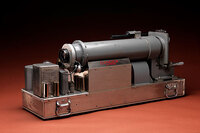The article “Digital Keys for Unlocking the Humanities’ Riches” recently published in the New York Times discusses the growing importance of data and technology to research in the humanities.
The next big idea in language, history and the arts? Data.
The focus on digital humanities is timely; this weekend the Visual Resources Center and the Division of the Humanities are co-sponsoring, along with the Newberry Library and Northwestern University, the very first THATCamp Chicago. THATCamp Chicago is a user-generated “unconference” where humanists and technologists work together for the common good. For more information, click here.
See also the University of Chicago Press’ recent blog entry exploring the top five recent books about new methodologies in the digital humanities.


